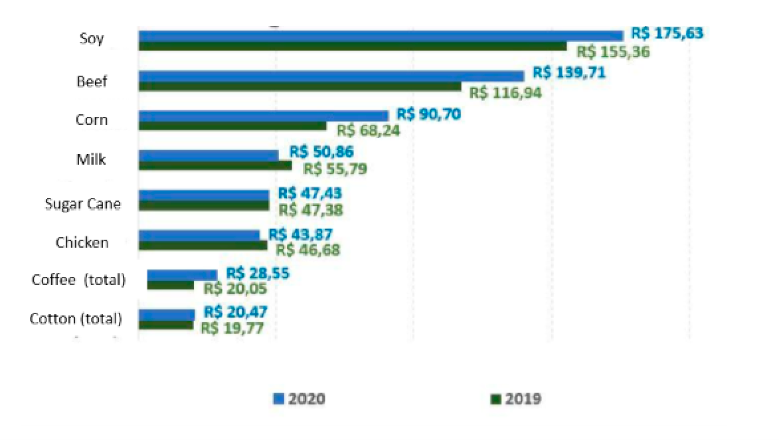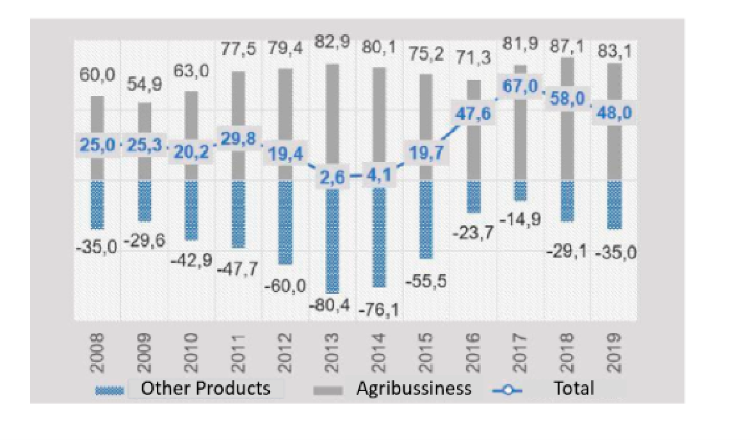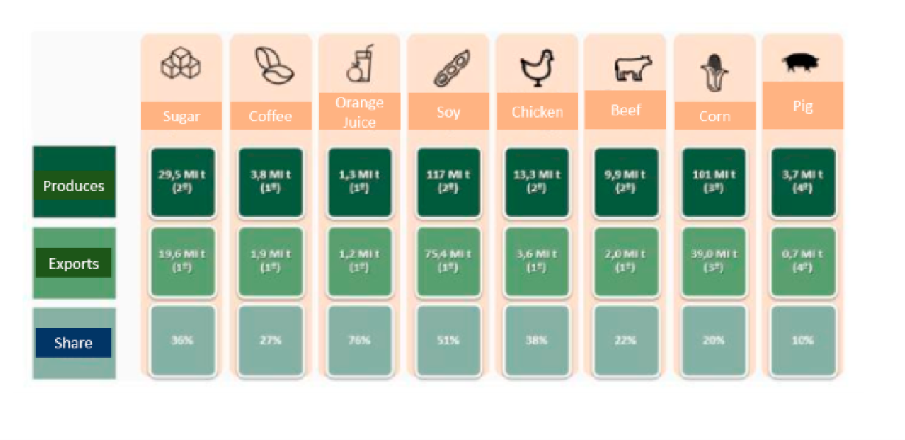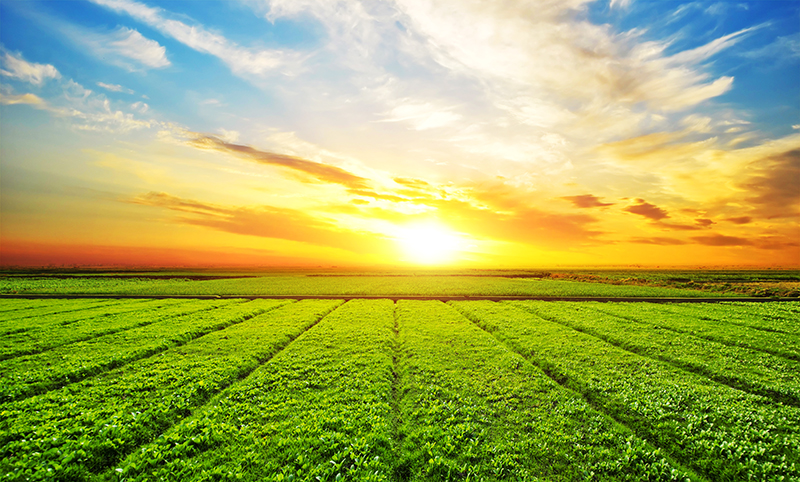Brazil, with a population that already exceeds 212 million, the largest country in Latin America and the fifth largest in the world in territorial area according to the latest data from IBGE [2], Brazil ”- with its beautiful beaches , exuberant nature, historical and cultural heritage, popular festivities and unique cuisine ”- Ministry of Tourism [3] has a lot to offer the world when it comes to business as well, especially agribusiness.
The last 40 years and their fruits
The Confederation of Agriculture and Livestock of Brazil[1] presents an extremely favorable panorama of Brazilian Agro, explaining that Brazil will be the great supplier of food of the future due to the development of Brazilian agricultural production in the last 40 years. With a growing production, the Brazilian agribusiness managed to drastically reduce the price of food, thus improving the health and quality of life of the urban population, in addition to freeing their purchasing power for goods produced by the industry and the service sector. The increasing surpluses in production caused the Brazilian agribusiness to expand its sales to the world, consequently conquering new markets. As for the future, the events of those years will continue to bear fruit and prospects for the country’s development. A crucial vector of Brazilian economic growth, the agribusiness has generated in 2019 R$ 1.55 trillion, that is, 21.4 % of Brazilian GDP, with the agricultural sector corresponding to 68 % of that value (R$ 1.06 trillion) and livestock to 32 % (R$ 494.8 billion) according to data from the Center for Advanced Studies in Applied Economics (CEPEA/USP) in partnership with CNA [1]. Still according to the CNA [1], the gross value of agricultural production in 2019 was R$ 651.5 billion (R$ 250.8 in the livestock segment and R$ 400.7 in agricultural production).
Estimates for 2020 are R$ 728.8 billion, an increase of 11.8 % compared to 2019. With regard to commodities, figure presents the ranking of the highest revenues and estimates for that year, with soybeans (grains) ranking first.
Figure 1: Gross Value of Production in Brazil in 2019 and 2020 (in R$ billion) – Ranking of the highest revenues.

Source: CNA, May 2020. GVP of 2019 and 2020, prices from May 2020.
The sector also generates countless jobs, absorbing practically one out of three Brazilian workers, according to the most recent National Survey by Household
Samples (PNAD) 32.3 % (30.5 million) of the total of 94.4 million workers belonged to agribusiness.
Brazil Today
With regard to international trade, 43% of Brazilian exports in 2019 were from
agribusiness, which also contributes significantly to the performance of the Brazilian economy, as shown in figure 2, that analyzes the balance of the Brazilian commercial balance from 2008 to 2019. Despite the challenges in the domestic and international markets, the destinations and the diversity of products exported by the Brazilian agribusiness increased significantly, as illustrated in figure 3.
Figure 2: Brazilian Trade Balance from 2008 to 2019 (in US$ billion)

Source: Agro Stat/MAPA ; CNA.
As for what Brazil is today, it can be said that it is the largest exporter of sugar, coffee, orange juice, soy beans, beef and chicken. The world’s largest producer
of coffee and orange juice, the second largest producer of sugar, soy beans, beef and chicken and the third largest producer of corn. Currently, it is also the world’s largest exporter of agricultural products – approximately 96.9 billion, only behind the European Union, the United States and China. In relation to the economic effects of the current global pandemic, the sector has contributed to coping with
them, not only ensuring domestic supply, but also showing a growth of 1.9% of GDP in the first quarter of 2020 (in comparison with the same period of the previous year), while in the first four months, also in comparison with the same period of the previous
Figure 3: Brazilian Production and Exports in the World Ranking in 2019.

Source: USDA, 2020; CNA.
References
[1] Confederação da Agricultura e Pecuária do Brasil. Panorama do Agro. Jun. de 2020 – https://www.cnabrasil.org.br/cna/panorama-do-agro[2] IBGE. Instituto Brasileiro de Geografia e Estatística. Nov. de 2020 – https://www.ibge.gov.br/
[3] Ministério do Turismo. O Brasil espera por você. Abr. de 2020 – http://www.turismo.gov.br/



